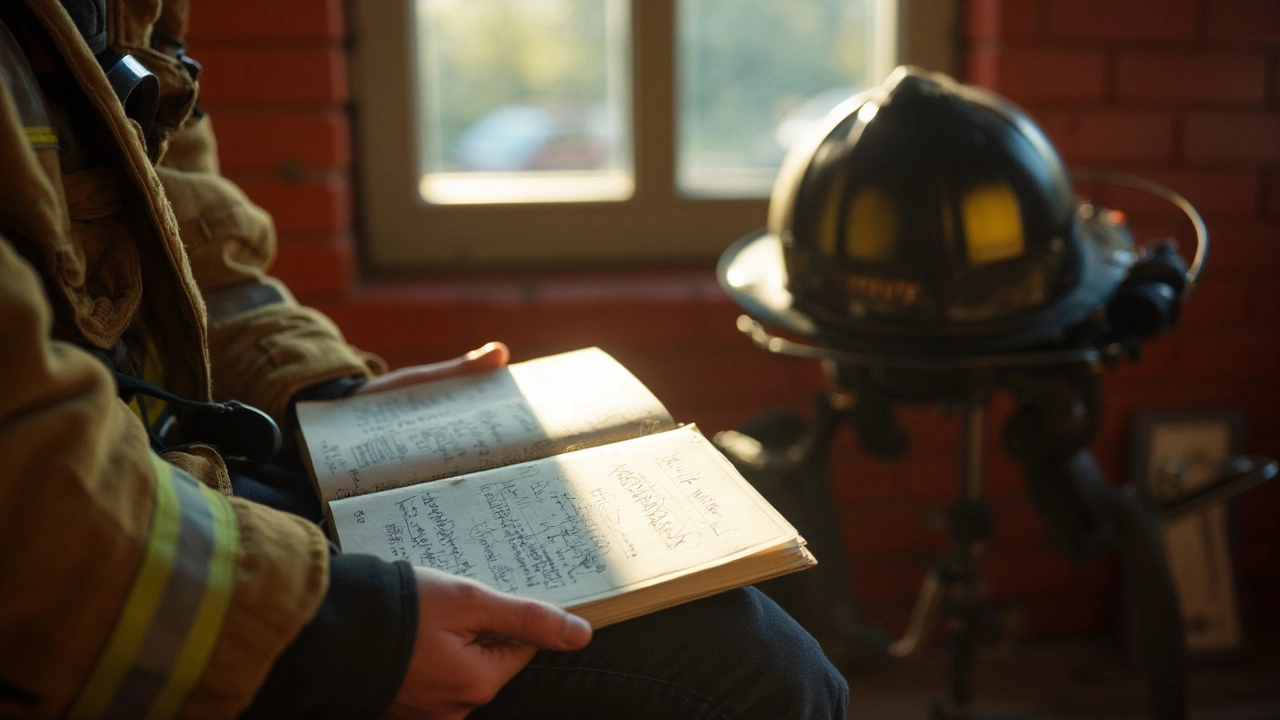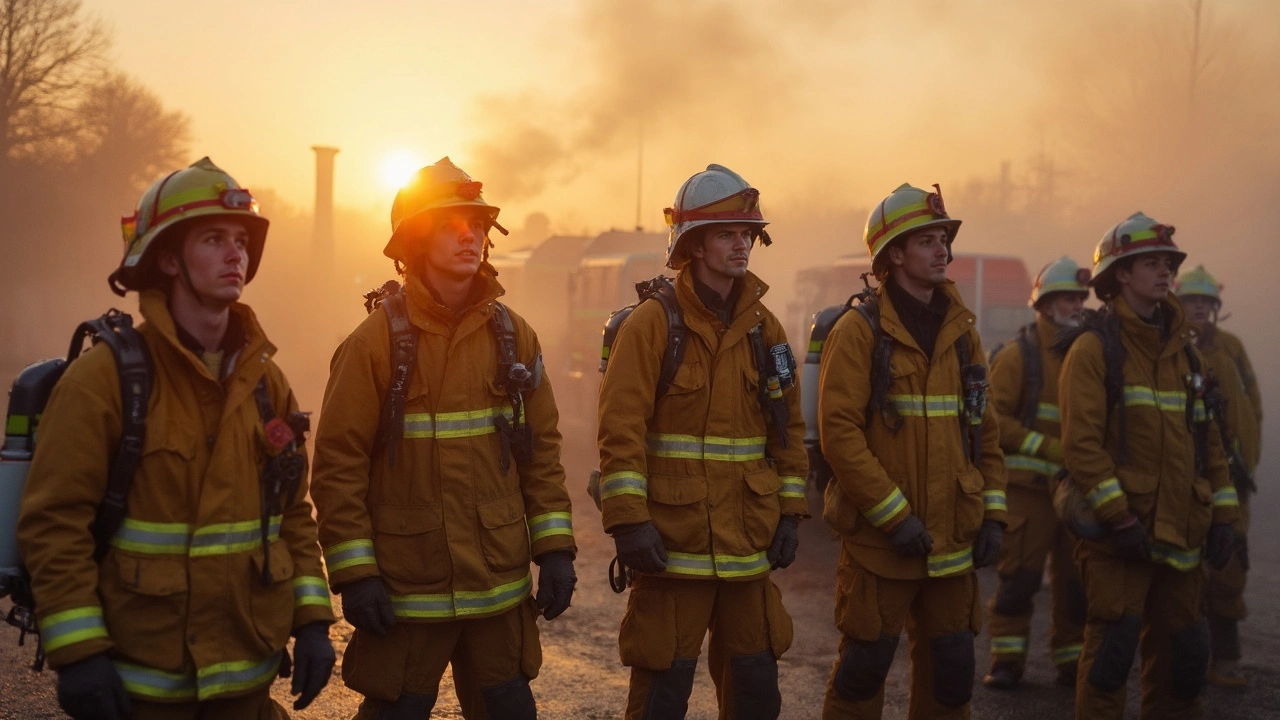If you’re eyeing a firefighter badge in Virginia, one of the first questions you’ll ask is, "How long will fire academy take me out of my daily life?" Nobody wants surprises when it comes to commitment—especially when that commitment can last for months.
Fire academy in Virginia usually runs 16 to 24 weeks if you sign up for a full-time basic firefighter program, like the one at the Virginia Department of Fire Programs or academies in Northern Virginia and Richmond. That means you’re looking at roughly four to six months before you graduate. But there’s more: some local volunteer departments run part-time academies that stretch longer, sometimes meeting on evenings or weekends to fit work schedules. Those can last nine months or even up to a year.
No matter which path you pick, you’ll want to line up your work, family, and fitness plans right away. The academy takes time—and a lot of energy. Having a heads-up on the schedule means you can prep meals, arrange rides, and clear your calendar for late-night studying or early morning PT. Trust me, people who plan ahead walk in with a big advantage.
- Virginia Fire Academy Length: What’s the Real Timeline?
- What Happens During Fire Academy
- Tips for Surviving and Thriving
- Certification and What Comes Next
Virginia Fire Academy Length: What’s the Real Timeline?
If you’re hoping to clock out of normal life and jump into the fire academy, you’ll first need to get to grips with the actual timeline. In Virginia, fire academy programs aren't all the same length; it really depends on your location, academy, and whether you’re going full-time or part-time.
Most folks aiming for their fire academy certification will go through the Virginia Department of Fire Programs (VDFP) Firefighter I and II track, which is pretty much the entry ticket to getting hired. Here’s the breakdown of common schedules:
- Full-time academies: Usually run five days a week, 8-10 hours a day. Most finish in 16 to 24 weeks. That’s about 4 to 6 months from start to finish.
- Part-time/Volunteer academies: Classes on nights and weekends for people who work or have family commitments. These can stretch out to 9-12 months, depending on the pace.
Cities like Fairfax, Virginia Beach, and Richmond offer full-time academies, and you’re likely looking at a Monday-through-Friday commitment—sometimes with evening homework or weekend drills. Volunteer departments might only meet twice a week plus some weekends, but your timeline gets a lot longer.
For a clearer snapshot, check this table of what you can expect at some well-known academies:
| Academy Name | Schedule | Total Duration |
|---|---|---|
| Fairfax County Fire Academy | Full-time, Mon-Fri | 22 weeks |
| Virginia Department of Fire Programs (statewide basic) | Full-time, daytime | 20 weeks |
| Richmond Fire Academy | Full-time, Mon-Fri | 24 weeks |
| Small Volunteer Department (e.g., Shenandoah County) | Part-time, nights/weekends | 9-12 months |
Weather delays, holidays, and real emergencies can sometimes stretch out your time, so always leave a little wiggle room if you’re planning around work or school. Some folks walk in expecting to finish right at the deadline and get thrown off when classes get rescheduled—you don’t want that surprise right at the finish line.
Before you commit, check the exact schedule with your local program. Each academy has its quirks, and some even offer hybrid online/in-person options post-pandemic. If you’re organized, you’ll have a much smoother ride through training—and you’ll know exactly when to expect to walk that graduation stage.
What Happens During Fire Academy
Life at the fire academy in Virginia isn’t just about sitting in a classroom. You’re on your feet most of the day, and there’s a good mix of book work and hands-on practice. The goal is to shape recruits into firefighters who can handle real emergencies—not just pass a test.
Here’s a breakdown of what your typical week might look like:
| Activity | Hours per Week |
|---|---|
| Classroom / Lecture | 10-12 |
| Physical Training (PT) | 5-8 |
| Practical Skills | 18-20 |
| Testing / Review | 2-3 |
During lectures, you’ll cover fire science, building construction, hazardous materials, and medical response basics. Don’t expect long breaks—most days start before sunrise, and physical training is non-negotiable. You’ll be running, dragging hoses, and practicing search-and-rescue drills almost every day. If you can’t run a mile right now, start training early—it’s not just about strength but also stamina and teamwork.
In hands-on sessions, expect to suit up in full turnout gear (helmet, coat, boots—the whole package) even when it’s hot outside. You’ll learn to use ladders, ventilate a smoky room, force open doors, and master the basics of pump operations. Most recruits agree: the live-burn exercises—where you actually enter controlled fires—are the most intense but also the most memorable.
You’ll also use and maintain all sorts of equipment, from fire hoses to axes and airbags. All this is paired with medical training—usually a basic EMT certification—since you’ll be the first on the scene at accidents or medical emergencies.
- Show up early to every session—being late can get you sent home.
- Stay hydrated and eat right; dehydration and burnout are common complaints in the academy.
- Ask questions during class or drills, especially if you’re struggling with any technique.
- Get comfortable working with a team—everything in the academy requires teamwork.
Every class ends with a written and skills test. If you don’t pass, you’re often given a chance to retake—but not always. Virginia fire academies are strict about performance, because the real world won’t cut slack.

Tips for Surviving and Thriving
Fire academy in Virginia packs in a lot. The physical and mental stuff hits hard, especially if you’re not ready for what’s coming. Here’s how to not just survive but actually have a decent shot at thriving while you’re there.
- Fire academy is exhausting. Start working out weeks before it begins. Focus on cardio, weight lifting, and flexibility, because you’ll run, lift, and crawl—sometimes all before breakfast. It’s normal for rookies to say the first few weeks leave them sore in muscles they didn’t know existed.
- Hydration is non-negotiable. Bring a giant water bottle; you’ll refill it a lot. Virginia’s summers especially will roast you in bunker gear, and even in winter you’ll sweat it out. Most instructors say dehydration is the quickest way to get sidelined.
- Time management is huge. Get a physical planner or use your phone, but map out your week. Classes, drills, studying, sleep—write it down. Fire academy eats up hours fast, and the folks who drown are usually the ones who don’t plan.
- Don’t isolate. Make friends and swap notes with your fellow cadets. It’s not just about camaraderie—peer networks help fill in knowledge gaps. If someone’s got experience as a paramedic or in the trades, talk to them. Learn from them.
- Chow down right. Bring protein-heavy snacks, like trail mix or energy bars. You’ll be surprised how hungry you get after dragging a hose for an hour. Instructors say the best students never skip meals and always have food on hand during long drills.
One more tip: expect to fail sometimes. Messing up is normal. Even seasoned recruits burn toast on the pump panel or fumble knot-tying on day one. The key is to shake it off and get back in line. The academy’s built to teach you under real pressure, so treat every mistake as a chance to improve. That’s how you get better—and that’s what every department in Virginia looks for.
Certification and What Comes Next
The end of the academy doesn’t mean you’re automatically a firefighter. Once you finish, you’ll need to pass the Virginia Firefighter I and II tests. These aren’t just some easy, check-the-box quizzes. The written exam covers real scenarios, safety procedures, and everything you drilled during training. Then there’s a hands-on practical test. You’re going to gear up just like during class—think pulling hoses, searching smoke-filled rooms, and using ladders as if it’s the real deal. Passing both is non-negotiable if you want to work on the fire ground in Virginia.
If you nail the exams, you walk out with state certification recognized all across Virginia and in a bunch of other states that use the Pro Board system. This is your ticket. It tells fire chiefs you’ve put in the time, sweat, and study to meet the national standard. Some counties and cities (like Fairfax or Virginia Beach) even require extra certifications, such as EMT-Basic, before you can go full-time. If you already have EMT when you graduate, you’ll stand out right away.
So what happens after you secure your spot on the certification board? Here’s what most rookies do next:
- Apply to local fire departments or volunteer companies. Most have hiring cycles, and some keep your info on file for months.
- Prep for physical agility testing. Many departments run their own fitness tests before they even look at your academy credentials.
- Get ready for interviews. Chiefs look for confidence, teamwork, and a can-do attitude as much as your certificate.
One thing nobody tells you—you’re never really “done” learning. Departments send you to extra courses: Hazmat, rope rescue, and courses specific to their area. Staying in shape and keeping your knowledge up to date is part of the job. It never stops, but it gets a lot more rewarding the longer you stick with it.
If you’re serious about fire academy in Virginia, map out your moves: pass those exams, chase more certifications, and stay interview-ready. Your journey kicks off the second you graduate, not the day you sign up.





Write a comment